BOOST COOLER STAGE 1 TD
FEATURES
AT A GLANCE
- Entry-level system incl. adjustable boost pressure switch (up to 15 PSI / 1.0 bar).
-
Performance Increase: Power and torque gains of up to 10–25%
-
Thermal Relief: Effectively reduces exhaust gas temperatures by up to 120°C – ideal for tuning, towing, and heavy loads.
-
Efficient Charge Air Cooling: Lowers intake air temps by up to 60°C without boost pressure loss like conventional intercoolers.
-
Fuel Savings: Reduced specific fuel consumption due to optimized combustion.
-
Eco-Friendly: Significantly reduces nitrogen oxides (NOx) and soot emissions under full load – perfect complement to DPF systems.
-
Engine Care: Cleaner combustion chamber and intake system – no oil coking or deposits.
-
Universally Compatible: Suitable for all turbo diesel engines up to 2.1 bar boost pressure (HDi/TDI/TDCi/TDS/... etc).
-
Easy Installation: Includes all required components for straightforward installation.
SNOW PERFORMANCE
BOOST COOLER
SYSTEMS
Maximum power and reduced emissions for your turbo diesel
The Boost Cooler Stage 1 water injection system from SNOW Performance enables a power increase of up to 10–25% in turbo diesel engines without causing thermal overload. By cooling the intake air by up to 60 °C and effectively lowering exhaust temperatures, thermal stress is reduced and torque is increased – ideal even for performance-enhanced engines.
As soon as the preset boost pressure is reached, the patented high-pressure pump injects finely atomized water or a water/alcohol mixture (methanol or ethanol) into the hot intake air. This evaporative cooling leads to improved combustion efficiency and significantly reduces the formation of nitrogen oxides (NOx).
Another benefit is the steam expansion effect: The evaporating water in the combustion chamber creates additional pressure on the piston, increasing torque and optimizing power output. This technology has already been successfully used in aviation to improve engine efficiency.
BOOST PRESSURE SWITCH
INCL. RELAY
The desired injection start point is easily set using the included boost pressure switch. Once the preset boost pressure is reached, the Boost Cooler activates (on/off). Unlike the Boost Cooler Stage 2 and Stage 3 systems, the injection quantity in the Stage 1 system is controlled without electronic regulation.
This makes the kit particularly well-suited for engines with a constant load profile, such as in combined heat and power units (CHP), marine diesels, or stationary applications. Installation in passenger cars or commercial vehicles is also easy and worthwhile.
PERFORMANCE
With the Boost Cooler Stage, you achieve a noticeable power increase of up to 10–25% – even on already tuned turbo diesel engines. Injecting a finely atomized water or water/alcohol mixture into the intake air improves oxygen density in the combustion chamber. The result: more efficiency, more torque, and clean, controlled combustion.
OPTIMAL COOLING
Water injection effectively cools the intake air via evaporative cooling, reducing intake temperatures by up to 60°C. This allows for higher air density and more oxygen for combustion. Additionally, in-cylinder temperatures are lowered, which improves power and efficiency.
LOWER CONSUMPTION -
LESS NOx
Integrating water-methanol injection into turbo diesel engines enables significant reductions in nitrogen oxides (NOx) and soot emissions. Studies show NOx can be reduced by up to 30% and soot by up to 70%. At the same time, fuel efficiency improves, with savings of up to 5–15%, depending on vehicle type, driving style, and usage conditions (e.g., towing).
LESS COMBUSTION CHAMBER DEPOSITS
Cleaner combustion with the Boost Cooler produces fewer soot particles and carbon compounds that could form deposits. Water injection also prevents excessive temperatures in areas such as exhaust valves or pistons. High temperatures promote oil coking by causing oil to burn and degrade more quickly. This cleaning effect is both preventative and can help break down existing deposits.
EASY INSTALLATION
To ensure a hassle-free installation, all necessary connectors are included with the system. The detailed installation manual in English, with many illustrations and a clear layout, guides you step by step through the setup process.
MOTORSPORTS KNOW-HOW
Motorsport Expertise for the Street – Water-Methanol Injection Systems by SNOW Performance
As an experienced OE supplier and trusted name across various motorsport disciplines, SNOW Performance stands for top-tier quality and long-lasting durability. Our proven water-methanol injection systems, Made by SNOW Performance, deliver cutting-edge motorsport technology for ambitious street and track drivers alike. Rely on expertise that performs – on the racetrack and in everyday driving.".
High-Pressure Pump System
The Original: 300 PSI High-Pressure Pump by SNOW Performance
SNOW Performance 300 PSI UHO methanol injection pumps deliver unmatched pressure, technology, and reliability. Each pump is made in the USA and individually tested before shipping to ensure quality and dependability. While other pumps may look similar, they lack the features of SNOW Performance pumps.
Double EPDM seals ensure durability and higher pressure. Proprietary internal wiring reduces power consumption, and the built-in thermal switch protects against overheating, ensuring consistent performance and maximum longevity – perfect for daily use, off-road, and the track.
Hyper-Sonic Injection Nozzles
Optimal performance starts with optimal cooling
The Hyper-Sonic nozzles from SNOW Performance use a patented dual-chamber design to accelerate fluids to supersonic speed and spray them through a Venturi opening. This creates extremely fine droplets (as small as 20µm) enabling highly efficient evaporative cooling.
Scientific studies (e.g., SAE Paper 2021-01-0398) show: the smaller the droplets, the better the cooling – directly impacting engine performance and efficiency. Combustion also runs cooler and more controlled, which is especially beneficial for high-load or tuned engines.
Perfect for maximum performance – with optimal thermal management.
3L Reservoir with Level Indicator
The 3L Boost Cooler tank ensures reliable supply to your water-methanol injection system. The integrated level sensor with warning LED (orange) for in-cabin mounting gives early alerts of low fluid levels, protecting the system from dry running. Pre-configured for our 1/4" pressure line.
Need more range? Easily upgrade to a 9.5L or 26.5L tank. Simply configure your desired tank size with your Boost Cooler system.
SCOPE OF DELIVERY
- 1 x High-pressure EPDM diaphragm pump system 20bar/300psi
- 1 x Boost pressure switch 1.0bar/15psi, incl. relay
- 2 x HyperSonic injection nozzles incl. 100µm fine filter
- 1 x 3L water-methanol reservoir tank
- 1 x Level indicator (tank sender, LED for interior mounting)
- 1 x 90° nozzle holder, hard-anodized aluminum
- 1 x Accessories & mounting materials
- 1 x English installation manual
Frequently asked questions
Why turbo / naturally aspirated engine achieves more power with the Boost Cooler?
The main problem of any internal combustion engine is the thermal load. In nearly all engines, the power is restricted by the temperature in the combustion chamber. If a certain temperature is exceeded, uncontrolled combustion ("knocking") occurs.  Uncontrolled combustions results in a massive loss of power and engine damage. In a turbo engine, this problem is compounded even further. The intake of the turbo engine heats up strongly in the turbine (through compression and heat transfer of the exhaust gases) and the thermal limit is quickly reached. In conventional turbo engines, one tries to get this problem solved with the help of intercoolers.
Uncontrolled combustions results in a massive loss of power and engine damage. In a turbo engine, this problem is compounded even further. The intake of the turbo engine heats up strongly in the turbine (through compression and heat transfer of the exhaust gases) and the thermal limit is quickly reached. In conventional turbo engines, one tries to get this problem solved with the help of intercoolers.
The performance of a turbocharged engine is therefore directly dependent on the efficiency of the intercooler, as well as the cooling rate of the intake and charge air. The efficiency of intercoolers, however, is constrained by the ambient temperature and the maximum size of tight physical limits. An increase in boost pressure no longer produces more power and the damage to the engine is virtually inevitable. This issue can be solved using the Boost Cooler waterinjection concept. You can ensure additional cooling of the heated intake air through the injection of a water / alcohol mixture. The great advantage of the Boost Cooler is that the cooling is virtually unlimited in physical terms. That is, if the intake air is too hot, simply increase the injection volume to achieve the required cooling degree. This unique advantage can help fully exploit the capacity of turbo engines and the engine power is not restricted by the thermal limits.
Does the Boost Cooler cause any damage to my engine?
No. At a relative humidity of 50% and ambient temperature of 25° C, a turbocharged engine consumes (2.0 l displacement, 1 bar boost pressure) approx. 160 ml of water per minute. For example, if a gasoline engine is used, the combusted air / fuel mixture consists of approximately 50% of water vapour and carbon dioxide.  With the injection of 250 ml/ min of water per minute at full load, the Boost Cooler accounts for less than 1.6% of the exhaust gases Horror scenarios ("water hammer", rusting motors, etc.) that some of you might have read on the Internet tuning forums are only based on a lack of understanding of the technical writer or improper systems.
With the injection of 250 ml/ min of water per minute at full load, the Boost Cooler accounts for less than 1.6% of the exhaust gases Horror scenarios ("water hammer", rusting motors, etc.) that some of you might have read on the Internet tuning forums are only based on a lack of understanding of the technical writer or improper systems.
Study of Porsche Engineering (excerpt): “The technology of water injection into the intake manifold provides significant potential. This technology can use a stoichiometric air-fuel ratio in the entire operating area and an optimal ignition timing to increase the efficiency of the engine. In addition to a further reduction in fuel consumption, this effect also reduces the compression work so that the engine displacement can be further reduced."
Source: Porsche Engineering Magazine, Issue 01/2013
Where can I mount my reservoir and pump?
The pump needs to be within about 60cm (hose length) of the reservoir, and as low or lower than the base of the reservoir. It is a “pusher” pump, not a “puller” pump. In the engine bay, the reservoir and pump can be placed almost anywhere, as long as they are not very close to exhaust heat, or in the path of debris from the road. Be sure that the pump is mounted at the same level or below the reservoir and that the reservoir is not located higher than the nozzle. If the reservoir must be located higher than the nozzle, a solenoid upgrade is required to prevent gravity feed. Trunk mounting is also fine, but the pump needs to be close to the reservoir and gravity fed. Lengths of 6-7m of tubing to the nozzle are fine.
Which mixing ratio and what kind of water are used?
Use distilled or demineralised water only. Distilled water is available in any hardware store (about € 1.50 for 5 litres) or gas station. Of course you can also use clean tap water when nothing else is available at the moment. Use methanol or bio-ethanol (approx. 45 € per 30 litres, including shipping), or isopropanol. A 50/50 ratio is recommended. This has been demonstrated to be the best for charge/air cooling, excellent detonation control, and safety.
Do NOT use E85 or any other fluid with gasoline mixed in. It will destroy the fluid delivery part of your Boost Cooler and instantly void the warranty.
How much range will a tank of Water/Methanol provide?
This depends on a number of variables. HP, injection system, settings, driving style, etc. For most gasoline engines in the 200-250hp range, the standard 3l tank will last around a tank of gasoline when driving on the road. Diesels use more fluid than a gasoline application, and are in heavier load states more often. Due to the higher consumption of liquid in turbodiesels and/or powerful gasoline cars, we recommend at least our 9.5 l or 26.5 l trunk mounting kit as needed.
Where can I mount the nozzle?
The best placement of the nozzles is in the area around the inlet to the intake manifold or virtually anywhere on the pipe leading from the intercooler to the intake manifold. The nozzles can be placed at any position on the tube, so long as they are pointing at a 90 degree angle to the direction of airflow. The nozzles can be placed in a series or right next to each other.
There is enough heat and velocity and flow through the pipe under boost to absorb the water/methanol regardless of the nozzle positions relative to each other. Placement before the intercooler or turbo(s) is not recommended. Cooling is not improved. Never mount an injector nozzle before a turbocharger compressor. Studies performed by SAAB, concluded that pre-turbo injection will over time cause cavitation on the turbo wheel leading edges.
Do I need to activate the Boost Cooler in some way?
The Boost Cooler will activate automatically. Depending on the system, it activates after receiving a pre-set boost pressure or engine load signal, and then starts injecting in a load-dependent manner.
Do I need an intercooler with the Boost Cooler?
Up to approximately 2bar of boost, water/methanol injection (using 50% methanol) will provide all the density increase/detonation control needed in most applications. Of course, intercooling and water/methanol injection would provide even greater benefits, especially beyond 2bar of boost.
Most air-to-air intercoolers are only 50-65% efficient. For example, with 0.75 bar of boost and the resulting 50°C air charge temperature increase, an intercooler reduces the air charge temperature only 25 degrees. Also, an intercooler will reduce boost 0.1-0.25bar on average.
 |
 |
| Installation inside the engine compartment |
VC-MAF Controller |
 |
 |
| Reservoir with 9l capacity inside the trunk |
LCD-Controller |
 |
Tunetec Performance
Berlin
|
 |
Reinaldo Maloon
USA
|
| |
|
"...it´s unbelivable what the Boost Cooler does! We realized 520hp and 670Nm torque out of the RS4 by using the Boost Cooler!" |
"Incredible! After installing the Boost Cooler™, I can run 8 psi more boost and more timing with no knock!" |
|
 |
Dougs Auto
USA
|
 |
Simon W.
Schöllnach
|
| |
| "I can run 10° more timing! Now my Vortech supercharged Saleen runs like it should-huge seat of the pants difference!" |
"...your Boost Cooler is just awesome ! Power increases, temperature drops. Thats how tuning should be !" |
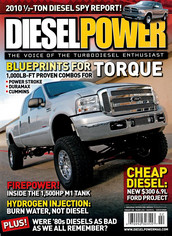 |
Diesel Power
Mit dem Snow Performance Stage 3 Boost Cooler system wurde bei einem 1991er Dodge Cummings eine Leistung von 587PS erreicht.
|
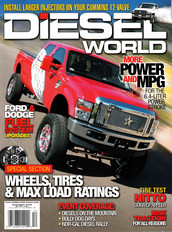 |
Diesel World Feature Truck
The Snow Performance MPG MAX® Boost Cooler® is installed on a Ford 6.4 Powerstroke with fantastic results! The editor is impressed because the results are better than promised.
|
| |
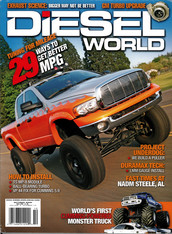 |
Diesel World
Discussion of the Boost Cooler® MPG MAX® and how it positively affects fuel mileage.
|
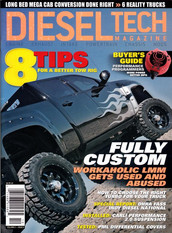 |
Diesel Tech
Diesel Tech installs the MPG MAX Boost Cooler to increase towing power, decrease EGTs and INCREASE FUEL MILEAGE!
|
| |
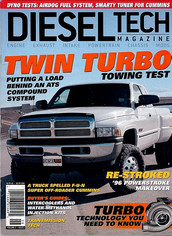 |
Diesel Tech
Snow Performance im Produktführer als einziger Hersteller von Wassereinspritzungen empfohlen.
|
 |
8 Lug Tests the new MPG MAX
8 Lug Installs the new MPG MAX on a GM Duramax.
|
| |
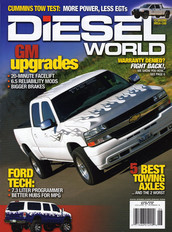 |
Diesel World
The newest issue of Diesel World has details on the SEMA International Media award won by Snow Performance as well as new prouduct info and an installation article on the new MPG-MAX system. The MPG-MAX provides better cooling, more power, and better fuel economy gains than any other water/methanol injection system available.
|
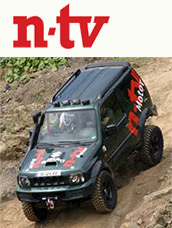 |
Dresden-Breslau Rallye auf N-TV Sport
Rallye Dresden-Breslau - Abseits der Straße durch Sand, Schotter und Morast. Eine Abenteuer-Fahrt für Off-Roader. Die Redaktion von N-TV bestritt die Rallye in Zusammenarbeit mit Suzuki Deutschland und Snow Performance. Der Suzuki Jimny, mit einem 1.5l Turbodiesel Motor, ist dem Boost Cooler Stage 3 Diesel- LCD System ausgestattet worden.
|
| |
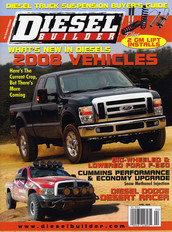 |
Diesel Builder
The new Boost Cooler Stage 3 Diesel MPG-MAX system continues in the Snow Performance tradition of making more power, controlling EGTs, and reducing emissions but with the added benefit of maximizing your fuel economy. Check out the simple MPG-MAX installation and see how it compliments other power adders and increases fuel economy by 2-3 mpg.
|
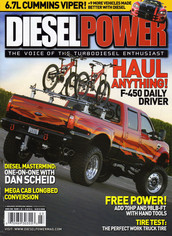 |
Diesel Power
Today´s turbo diesel trucks pull double duty as they get used as a work horse, daily driver, trailer puller, or play toy. George Wadeson´s ´06 1-ton Cummins is no exception and it sees it´s fair share of use whatever the reason may be. A Snow Performance Stage 3 Boost Cooler helps keep EGTs down while the 65 psi of turbo boost cranks out 1200+ ftlb of torque.
|
| |
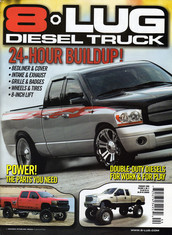 |
8 Lug Diesel Truck
Rodney Findley's Dodge diesel truck is an extreme audio and visual experience on wheels. Motivating the traveling entertainment booth is a hopped-up 5.9L Cummins with a long list of performance enhancing mods including a Stage 2 Boost Cooler system.
|
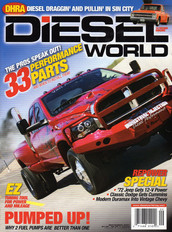 |
Diesel World
Ralph Merwin's custom J-series Jeep pickup sports a 12 valve Cummins diesel engine that is enhanced by the Snow Performance Boost Cooler for more power and reduced EGTs. |
| |
 |
Diesel World
The Snow Performance Stage 3 Diesel Boost Cooler is installed on Bully Dog's custom 6.7L Cummins. Using Boost Juice, the truck pumped out an additional 103 hp and 289 ft-lbs of torque!
|
 |
Diesel Power
Diesel Power magazine suggests that water/methanol injection be one of the first 11 modifications that you do to your diesel truck.
|
| |
 |
Diesel Builder
Stacked Diablo Sport performance controllers plus the Boost Cooler deliver over 200 hp on Snow Performance's own '04 Cummins 3500 shop truck.
|
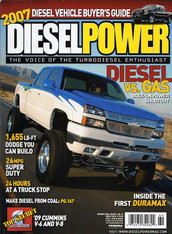 |
Diesel Power
Build up coverage of the 11 second Project X Dodge Cummins diesel truck which features the Snow Performance Boost Cooler. |
| |
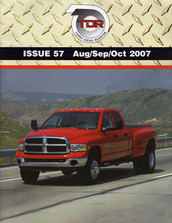 |
Turbo Diesel Register
A double controller stacked 2004 Dodge Ram 5.9L Cummins pulls double duty as a daily driver and frequent work horse. Over 100 WHP is achieved with the Snow Performance Boost Cooler along with a host of other performance goodies.
Base-Horsepower: 279PS
==> Boost Cooler w/ 50% Methanol: 453hp ==> w/ 75% Methanol: 487hp!
|
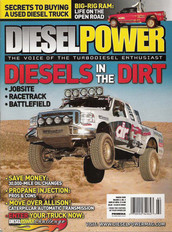 |
Diesel Power
Boost Cooler installation on a 2004 1-Ton Dodge Cummins with before and after dyno results. |
| |
 |
Trucks
A 2004 Ford F-350 receives a Snow Performance Boost Cooler and picks up over 50 whp. |
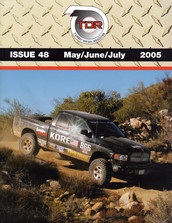 |
Turbo Diesel Register
An in-depth article that takes the many benefits of water/methanol injection for a modern turbo diesel into consideration. |